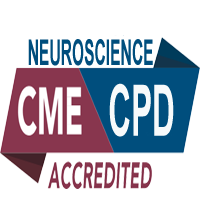
Binna Kim1
Seoul National University, South Korea
Title: The use of multimodal imaging to predict disease progression in trauma-exposed individuals
Biography
Biography: Binna Kim1
Abstract
Recent advance in computational analysis of multimodal neuroimaging using machine learning algorithms may enable early diagnosis of central nervous system diseases and predict the subsequent prognosis with high accuracy. In the current study, disaster survivors who were diagnosed with posttraumatic stress disorder (PTSD) in the early aftermath of trauma and healthy individuals who were not exposed to trauma were followed up as the trauma-exposed and trauma-unexposed groups prospectively. We assessed the multimodal characteristics of the fear circuitry’s brain regions including the amygdala, ventral prefrontal cortex, and hippocampus with volume, connection density, connection cost, tract strength, and network efficiency as variables associated with brain regions. Using a classification approach with multimodal neuroimaging data for an analysis, features of particular subset brain regions - the amygdala, ventral prefrontal cortex, hippocampus, insula, and thalamus - were identified to best characterize those of trauma-exposed group. We found that amygdalar volumes and the tract strength of its connections in combination with the insula and with the thalamus each were robust brain classifiers for the trauma-exposed group during an early stage of post-trauma when most of the survivors still meet the diagnostic criteria for PTSD. In contrast, the tract strength of the amygdala-ventral prefrontal cortex connection was a differentiating feature of the trauma-exposed group from that of the trauma-unexposed group during the recovery period from PTSD. These results suggest that the use of multimodal imaging analysis may applied as a competent and efficient tool in PTSD risk prediction.

